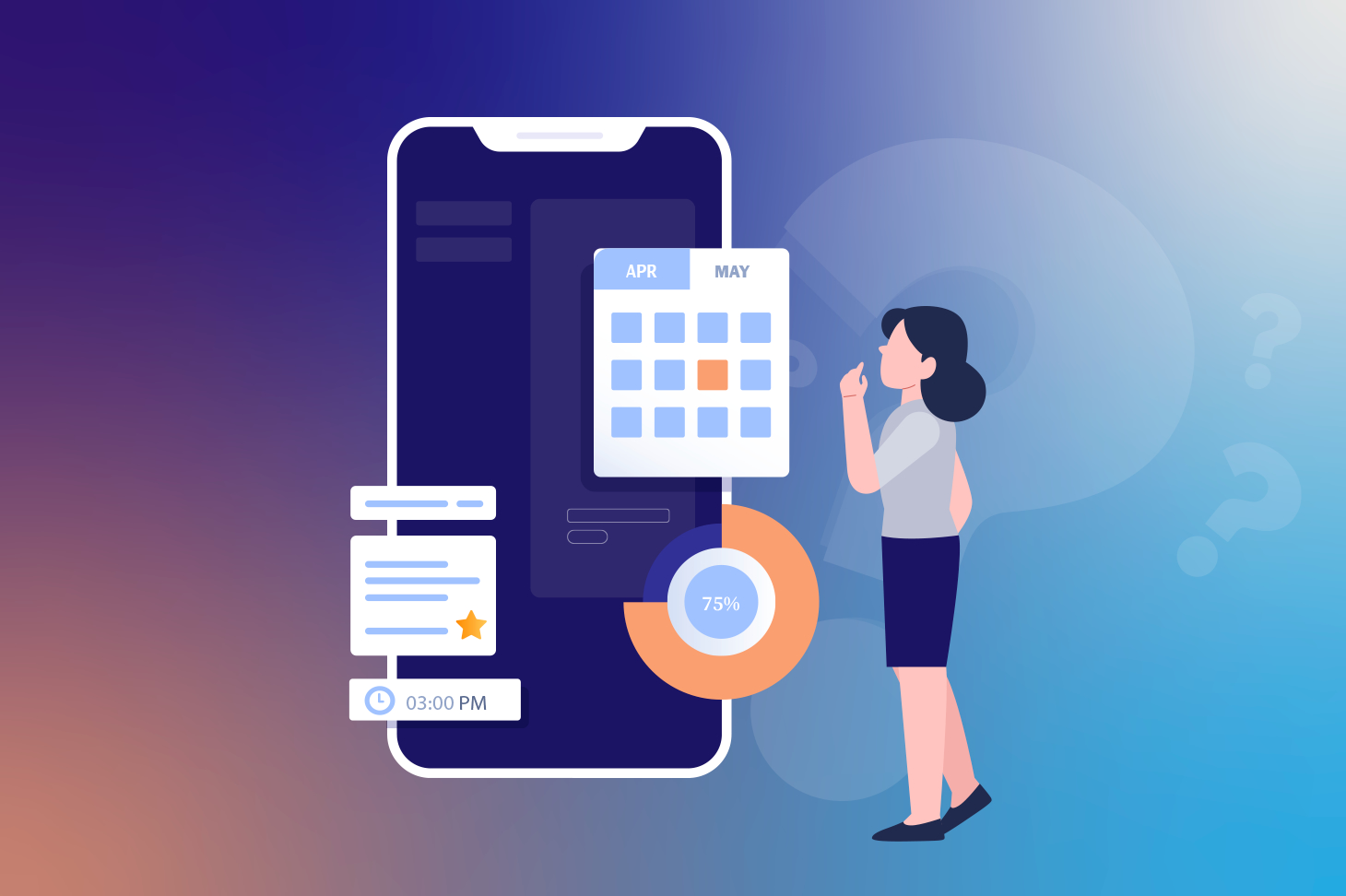Contents
The frantic pace of the modern world is dictating new game rules for business. Where once you could rely on luck, intuition, and feeling, now it’s data that helps you achieve maximum efficiency at minimum cost and risk that’s coming to the fore. It’s time to reshape how organizations make informed decisions based on data.
David Stodder, senior director at TDWI, in his TDWI Best Practices Report: Visual Analytics for Making Smarter Decisions Faster, suggests that business users are indeed ready to leave tables and standard BI reports behind. He explains how visual analytics can help professionals process data in a more complete and personalized way and make informed decisions based on the information they receive.
This tendency is quite reasonable. However, it is not the availability of data that determines the effectiveness of decisions. It is the process that the decision-maker follows based on the data collected and transformed. So in this article, we want to talk about data-driven decision-making in more detail.
What is Data-Driven Decision Making?
Data-Driven Decision-Making is a strategy where decisions are made based on what you think is the best choice. When you implement DDDM, information is gathered to analyze trends and make decisions for the future. Everything is based on what has worked in the past, not on feelings, opinions, or experiences. Companies that practice data DDDM focus their work around data. Information is the core of such companies. But to get real value, it has to be accurate and fit for purpose.
You can use the data to address financial issues, enterprise growth, marketing and sales, and customer service. There’re some key characteristics of a streamlined, data-driven approach to decision-making:
- KPI tracking. Use key performance indicators (KPIs) aligned with strategy. Be attentive to vanity metrics and simple metrics.
- Keep a record of the rationale. Write down why you made the decision, and what justified it.
- Learning from mistakes. Analyze the outcomes of bad and good decisions, creating learning and improvement cycles.
When choosing metrics for measurement, a company usually follows several criteria. For example, there should not be many, about 3-5 for each analyzed stage. The metrics should be similar for comparison with the indicators of previous periods. They should also be expressed in relative terms.
Benefits of Data-Driven Decision Making
Increasing transparency and accountability
One of the benefits of the data-driven decision-making approach is increased transparency and accountability of the organization. DDDM aims to improve teamwork and employee engagement. This is how the organization deals with threats and risks, improving overall performance. It leads to making the right decisions about their operations.
There are fewer mistakes because misunderstandings are less likely to occur. Employees know exactly what’s going on, and what their role is, and are more likely to suggest improvements and changes. All because they understand the current state of the business and long-term goals.
Objective data helps organizations collect data, use it for record-keeping and compliance, and be accountable for managing it correctly. Therefore, data-driven decision-making in business ensures that every piece of information is prioritized and the goal is specific.
Continuous improvement
Data-driven decision-making leads to continuous improvement of the organization. They gradually implement changes, monitor metrics, and make further changes based on the results. This increases the overall productivity and effectiveness of the organization.
Increases consistency
The use of data in decision-making processes ensures that the business agrees on results. This approach helps people understand how decisions are made. They can determine the implications of the data being collected and analyzed, and take appropriate action. When everyone participates in data-driven decision management, they gain the necessary skills and thereby increase consistency. Practice plays a vital role in every business. This is how workers can understand if sales are up or down or if customers are happy. In this way the company stays informed, constantly developing loyalty, engagement, and accountability.
Cost saving
An organization that just uses data will not reduce costs. But you can use collected data to identify possible cost-cutting measures. Maybe most of the budget is directed to an ineffective marketing strategy. Or conversely, one product returns more profit than any other. Data can be used to evaluate a product and also to identify and solve problems. The more effectively data is used in decision-making, the more agile the organization becomes. This characteristic allows a business to outsmart competitors and increase revenue. Companies using big data have seen an 8-10% increase in profits and a 10% decrease in total costs.
And based on a survey of Fortune 1000 executives conducted by NewVantage Partners for Harvard Business Review, businesses can invest in a big data initiative to become more data-driven in their processes.
Flexibility and quick adaptation
Predicting market trends and responding quickly will give a business an edge over its competitors. An organization that researches the market and provides a marketable product is considered an industry leader. Once a company receives and analyzes data, it makes decisions. Truly agile organizations are more likely to achieve high financial performance than the average business.
Feedback for market research
Data-driven decision-making provides feedback that gives insight into what customers like and don’t like. It’s how organizations create new products and services, plus it helps identify trends before they happen. By studying data, companies learn what to expect shortly and what to change to improve performance. In this way, companies maintain a good relationship with their customers.


How to Use Data to Make Business Decisions
Before you start analyzing information, it’s better, to begin with, an action plan. It should detail how you will find the right data and how you will interpret this data to make the right business decisions. Look at your goals and prioritize them. Any decision you make should start with your core business goals.
Define the goal
The first thing to do is to define business goals to understand the key and subsequent goals of the company. These can be as specific as increasing sales, or as abstract as increasing brand awareness. A goal set in advance will help select key performance indicators and metrics that influence data-driven decisions later in the process.
Data search and preparation
After defining the goal you need to solve and the solution you want to make, it’s time to find and use the relevant data. Collect and prepare all necessary information. However, access to quality and reliable data can be a big obstacle if your business information is stored in many disparate sources. You should start by preparing data sources with high impact and low complexity. For example, you can prioritize data sources with the largest audience. Don’t spend hours collecting and analyzing data that won’t affect your final decision. Collect only those that are relevant to your goal.
Data review and development plan creation
The next step is to review and examine the data. Visualizing them is critical to making effective data-driven decisions. Visual representation of ideas increases the chances of influencing the decisions of senior management and other employees. So, look at the data collected, and try to identify patterns or trends that are present in it.
If you can use data to prove that your decisions will have a positive impact on business growth, it’s worth taking the time to analyze the data in your CRM, customer service reports, and other means of storing information about the processes in your business. Also, share it with other employees for effective work. Highlighting key messages with informative text and interactive visualizations can influence audience decisions. This will help them make more informed decisions in their daily work.
How can Data Analysis Influence Decision Make?
As stated earlier, data analytics helps companies make better decisions to improve productivity and efficiency. First and foremost, making data-driven decisions will help ensure a better customer experience. Data analytics allows you to understand employee and customer interactions, and work with your IT department to improve those interactions. As IT connects with the marketing teams, it helps achieve audience results and goals. So the company better allocates budgets based on customer response. A deep understanding of customers allows for forming the right messages to the right audience at the right time.
The role of data in business decisions is to demonstrate a vision of what a company using data to make decisions looks like in reality. This approach helps clarify the business’s mission statement and get insights that make analytics and data real to people without analytics experience. Advanced data technologies through AI and machine learning become understandable to the broader community when used for predictive analysis of sales, equipment depreciation, and asset risk. Plus it improves overall business performance. Data analytics can help understand what areas an individual or the entire department needs to improve.
It’s consistent and continuous growth. Companies are creating new business opportunities, generating more revenue, forecasting future trends, and optimizing current operational efforts. Working with data helps make actionable business insights from data analysis and understanding the current state, direction, and intent of the business evident. Data analytics allows a company to do better risk assessment and management, whether structured or unstructured, and collaboration with the IT department can improve the forecasting of potential problems.


Examples of How Companies Use Analytics
Google is paying attention to what it calls “people analytics.” In one of its people analytics initiatives, Project Oxygen, Google mined data from 10,000 performance reviews and compared it to employee retention rates. The company used the information to identify the general behavior of effective managers and created training programs to develop competencies.
Amazon
The company has access to a huge amount of its customers’ data, such as names, addresses, payments, and search history. Amazon uses this information to improve customer relationships and serve customers faster and more efficiently.
Burberry
Burberry uses big data and artificial intelligence to improve productivity, sales, and customer satisfaction.
Their customers use loyalty programs in their mobile apps. And for those who use such services, the company asks them to share data and then uses the information to provide recommendations for online and offline products. Employees in offline stores can see a customer’s purchase history, preferences, and social media activity through a tablet. They can use this data to provide a more personalized experience to increase sales.
All items in Burberry stores have unique RFID tags. And when customers visit the store, the mobile app will communicate directly with them about different products.
American Express
A company, like Amazon, uses big data to analyze and predict consumer behavior. They use predictive models instead of traditional retrospective reporting based on business intelligence. This is how American Express more accurately predicts potential churn and customer loyalty.
Netflix
The service has a lot of data and analytics to understand the viewing habits of international consumers. They use the data to order original programming content that appeals worldwide. Also to buy the rights to movies and TV series.
So actor Adam Sandler has proven to be unpopular in the U.S. and U.K. in recent years. Netflix released four new movies with the actor in 2015, as previous work with the actor was successful in Latin America.
The North Face
Thanks to IBM’s Watson, the company uses artificial intelligence and machine learning to deliver personalized customer experiences. It does this through a mobile app. The system works just like a human salesperson. It tells them about different questions and shopping experiences and then provides personalized recommendations.
We took a comment from MegaResearch, a marketing agency, and this is what they told us:
Of course, we do competitive analysis in almost every study. We look at the revenue of the leading companies, consider their shares, study their strengths and weaknesses, promotion methods, sales channels, USP, and other parameters the customer is interested in. This is one of the most important components of business strategy, along with the analysis of the target audience. If we know what the customer wants and how competitors are trying to satisfy that demand, we can recommend the customer to increase their focus, for example, in the areas where we think the competitors are underperforming or, on the contrary, are greatly exceeding their current offer.
There are certain factors and market development trends here, which should certainly be analyzed and forecasted for the future so that the company for whose benefit we are doing the research can solve its business problem, with which it came to us.
MegaResearch
Making Data-Driven Decisions with the Right Data
The right data can help you make more informed decisions and optimize your strategy to increase profits. But how do you get the right data? Getting reliable, trustworthy data can be a challenge, but with the right approach, it doesn’t have to be. Let’s explore some of the most effective ways to get data for making data-driven decisions.
1. Internal Data Analysis
The most logical place to start when gathering data for decision-making is within your own company. All businesses have access to internal data sources such as customer records, sales histories, and inventory levels that can provide insights into customers’ needs and preferences as well as trends in sales and other areas of operations. Analyzing this internal data can help businesses make better decisions about pricing, product development, marketing strategies, and more.
2. Market Research
For external sources of information, market research is one of the best ways to gather reliable data on consumer trends and preferences. Market research can take many forms including surveys, interviews, focus groups, and observational studies that will provide valuable insights into consumer attitudes and behaviors that can inform decision-making on everything from pricing strategies to product development.
3. Social Media Monitoring
Social media has become an invaluable source of customer feedback since it gives you direct insight into what people are saying about your brand or products in real-time. This makes it possible to quickly identify potential issues or opportunities before they become major problems or missed opportunities for your business. Regularly monitoring social media channels will also give you insight into current trends in customer behavior that can inform strategic planning and decision-making processes in your business.
4. Web Scraping
Collecting data manually is an incredibly labor-intensive process — which is why web scraping API has become so popular in recent years. Web scraping enables businesses to quickly collect vast amounts of data that can be used to inform product development and marketing decisions.
Web scraping provides businesses with numerous benefits, including:
- Making data collection easier
- Increasing efficiency
- Lowering costs
- Improving accuracy
- Providing insights
- Uncovering new opportunities
Conclusion
A data-driven approach will help you respond quickly to market challenges. It will help companies make decisions based on real numbers and predict outcomes in different areas of the business with greater accuracy. It’s the kind of tool you need to drive growth, beat the competition and attract loyal customers. So, if you can use data to prove that the decisions you make can have a positive impact on business growth, it’s worth taking the time to analyze it.





